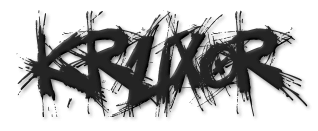:active
Quick Summary for :active
:active CSS pseudo-class represents an element (such as a button) that is being activated by the user. When using a mouse, "activation" typically starts when the user presses down the primary mouse button.
Code Usage for :active
/* Selects any <a> that is being activated */ a:active { color: red; } More Details for :active
:active
The :active CSS pseudo-class represents an element (such as a button) that is being activated by the user. When using a mouse, "activation" typically starts when the user presses down the primary mouse button.
/* Selects any <a> that is being activated */ a:active { color: red; } The :active pseudo-class is commonly used on <a> and <button> elements. Other common targets of this pseudo-class include elements that are contained in an activated element, and form elements that are being activated through their associated <label>.
Styles defined by the :active pseudo-class will be overridden by any subsequent link-related pseudo-class (:link, :hover, or :visited) that has at least equal specificity. To style links appropriately, put the :active rule after all other link-related rules, as defined by the LVHA-order: :link — :visited — :hover — :active.
Note: On systems with multi-button mice, CSS3 specifies that the :active pseudo-class must only apply to the primary button; on right-handed mice, this is typically the leftmost button.
Syntax
:active
Examples
Active links
HTML<p>This paragraph contains a link: <a href="#">This link will turn red while you click on it.</a> The paragraph will get a gray background while you click on it or the link. </p> a:link { color: blue; } /* Unvisited links */ a:visited { color: purple; } /* Visited links */ a:hover { background: yellow; } /* Hovered links */ a:active { color: red; } /* Active links */ p:active { background: #eee; } /* Active paragraphs */ Active form elements
HTML<form> <label for="my-button">My button: </label> <button id="my-button" type="button">Try Clicking Me or My Label!</button> </form> form :active { color: red; } form button { background: white; } Specifications
| Specification |
|---|
| HTML Standard # selector-active |
| Selectors Level 4 # the-active-pseudo |
See also
Link-related pseudo-classes::link, :visited, and :hover Select your preferred language English (US)DeutschEspañolFrançais日本語한국어PolskiPortuguês (do Brasil)Русский中文 (简体) Change language

